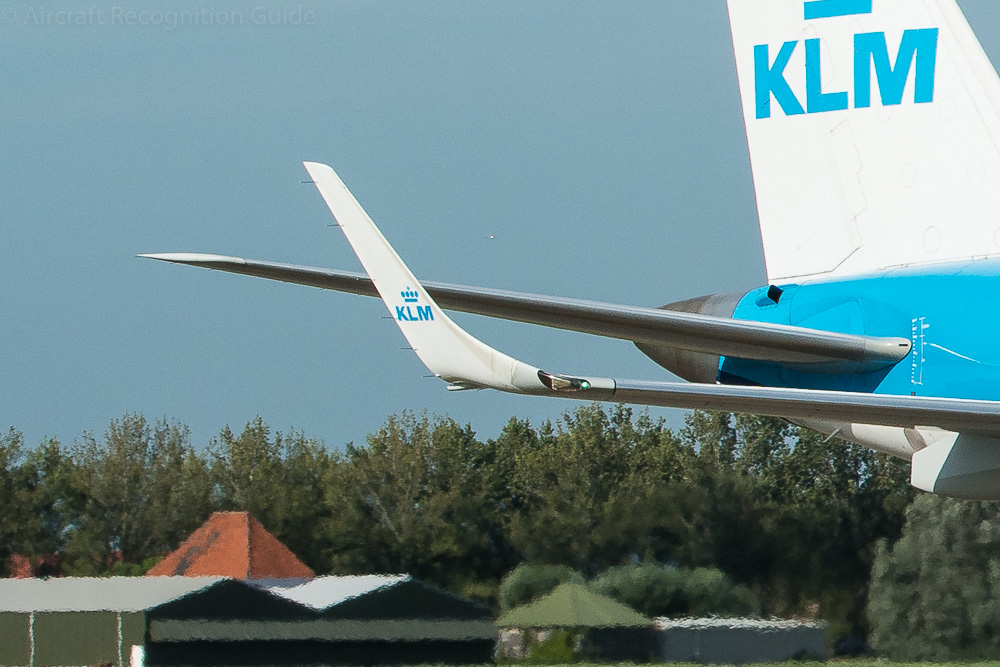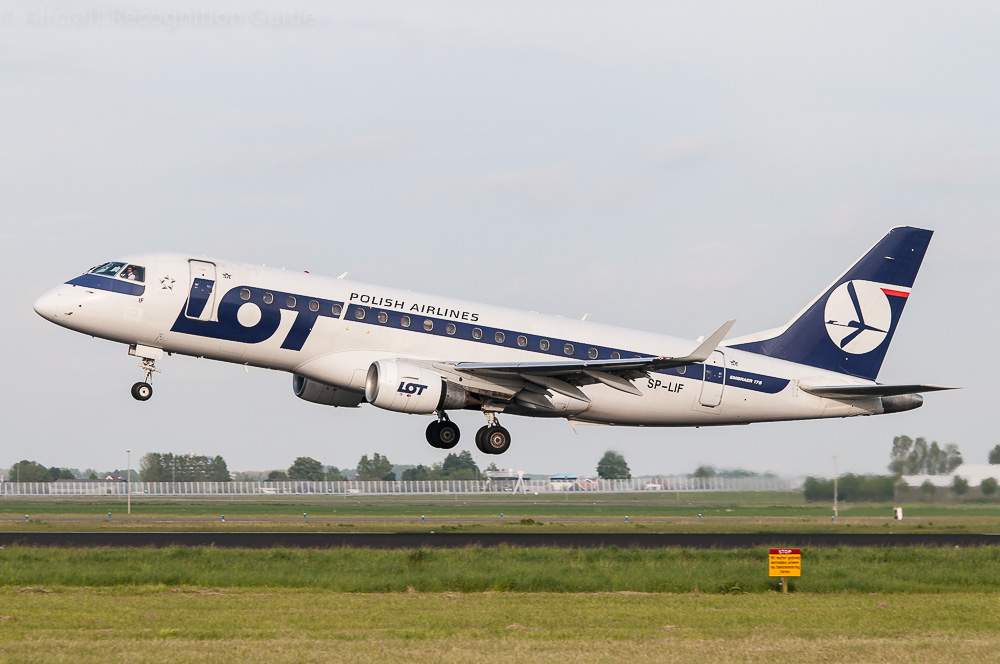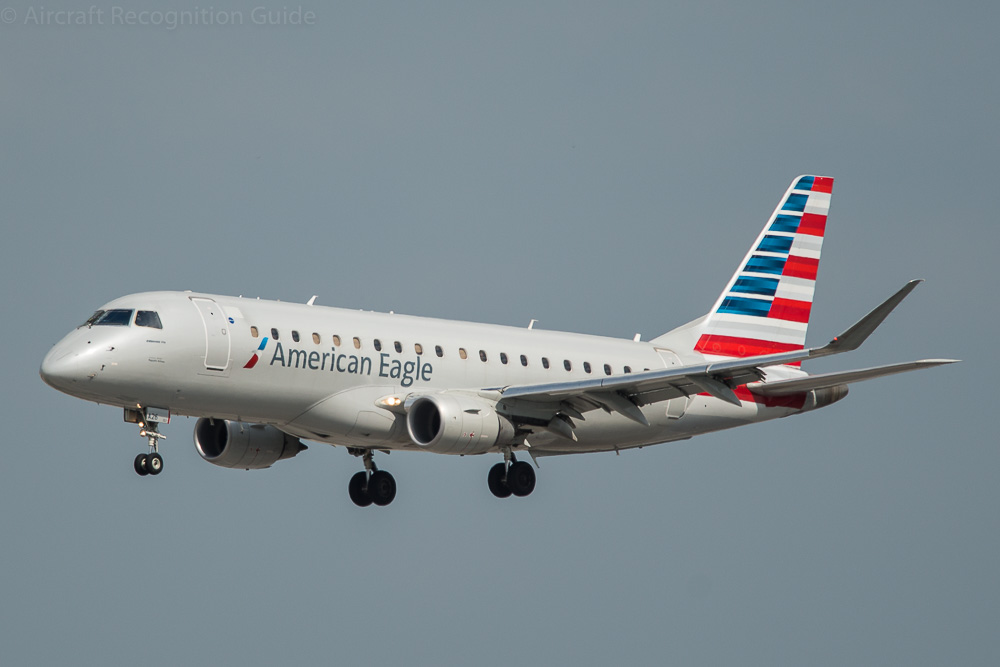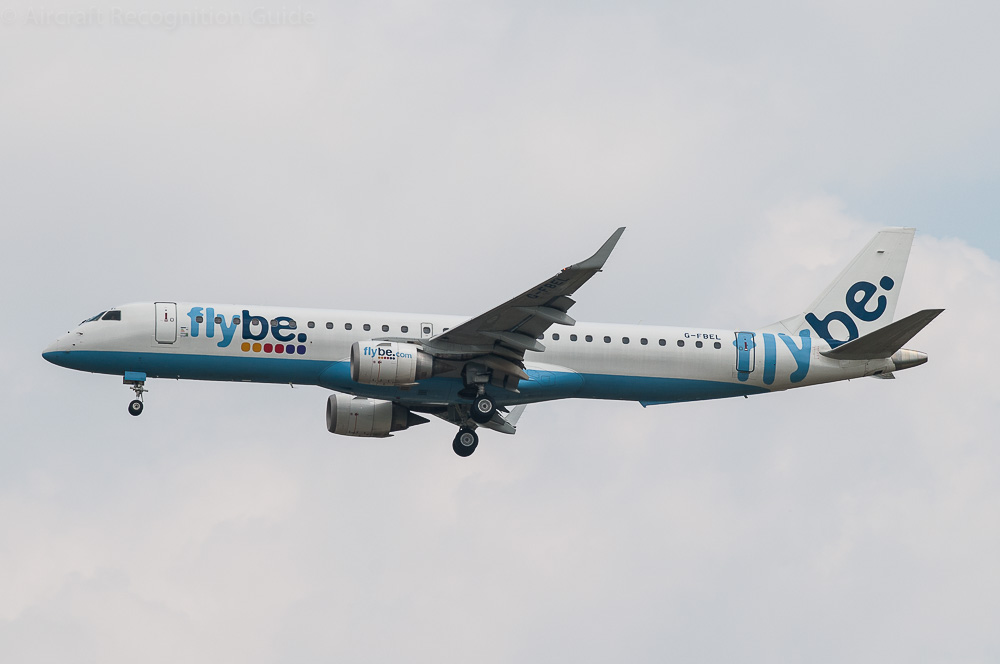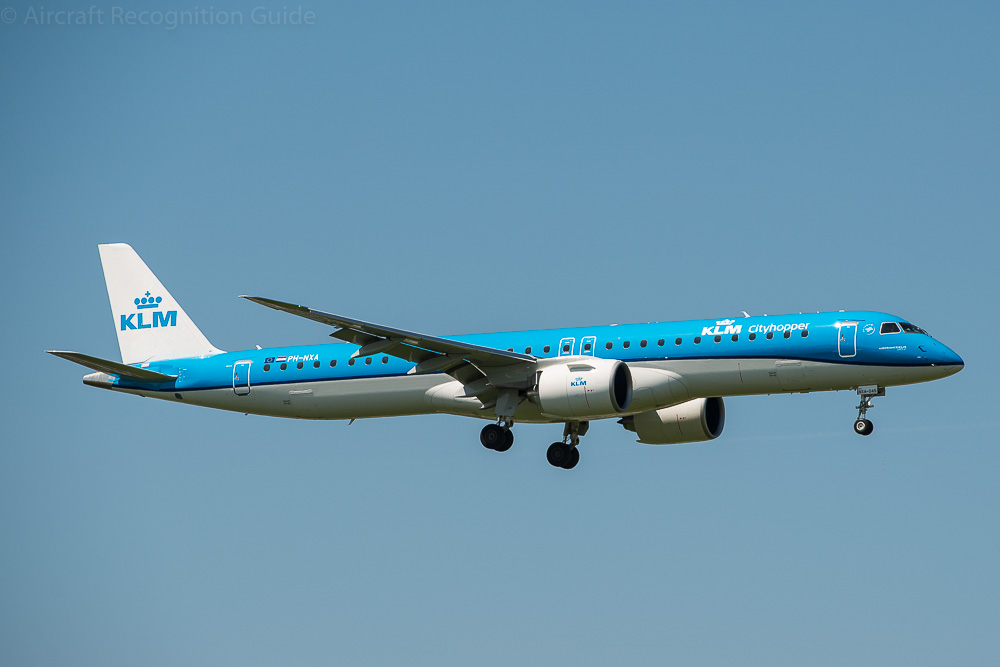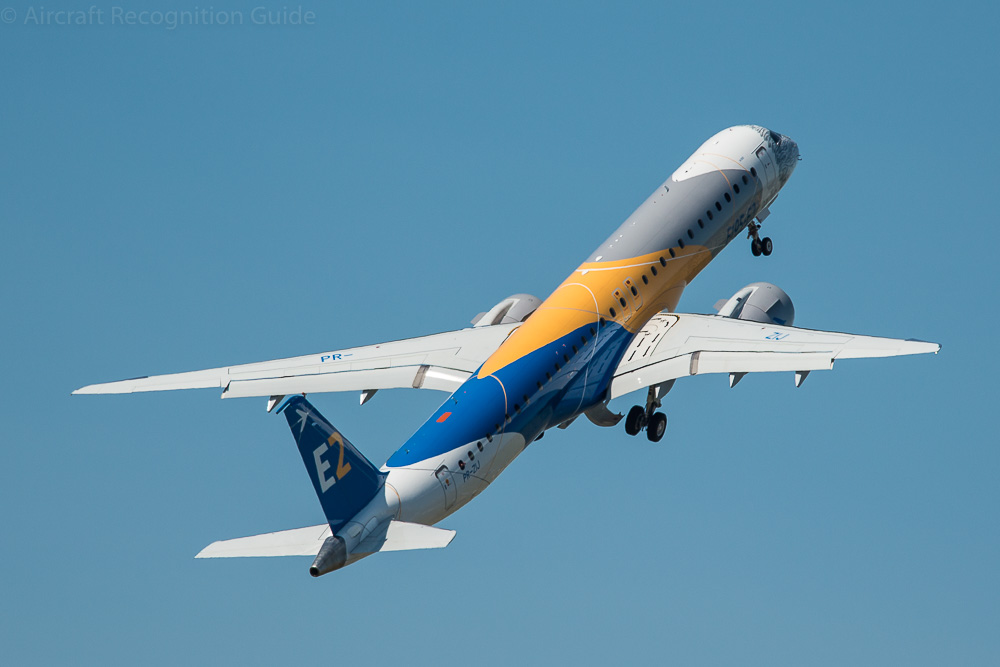
Embraer 170/190 family
Embraer's second family of regional jets, after the EMB145 series, is one of conventional design. This means a low swept wing, two jet engines under the wings and a horizontal stabiliser attached to the rear fuselage. As this is quite a frequently used configuration it may be difficult to recognise. Common for all aircraft in the family are the shape of the nose, similar to the larger Boeing 787, the triangular dorsal fin, engines with separate fan and core exhausts and pointy tailcone.
Different versions
To differentiate between the subtypes you have to look at
- the length of the fuselage
- the number of cabin windows
- the number of the emergency exits
- the shape of the engine nacelles
- the presence and shape of winglets
Embraer 170 (EMB170-100/ERJ170-100)
The Embraer 170 is the first and smallest member of the E-Jet family. Compared to the 190/195 it has no overwing emergency exits. The difference with the Embraer 175 is mainly in the number of cabin windows. On the left side the 170 has eighteen windows, the 175 twenty. This makes it quite difficult to distinguish both versions.
Embraer 175 (EMB170-200/ERJ170-200)
Officially designated EMB170-200, but marketed as Embraer 175, this version is nearly 2 metres longer than the Embraer 170. This results in two more cabin windows, which makes it difficult to keep them apart.
However, an improved version of the Embraer 175 has larger winglets, attached to the wingtips at 45 degrees. This version is sometimes referred to as the 'long-wing E175'. The original Embraer 175 then became known as the 'short-wing'.
Confusion possible with
Mitsubishi SpaceJet
This aircraft is very similar in appearance as the Embraer 190/195. The best you look at the nose and the cockpit windows. The nose is more sharply pointed than the Embraer, but this is quite subtle. (photo: Chiyoda I/WikiMedia)
Sukhoi Super Jet
The Sukhoi Super Jet 100 has a similar size as the Embraer 170/175. However, it can easily be recognised by the engines with a single exhaust. Also the SSJ lacks a triangular dorsal fin and has six cockpit windows instead of four.
Airbus A220
Formerly known as the Bombardier CSeries the Airbus A220 has the same basic configuration as the Embraer 170/190 family. Especially the A220-100 has similar looks as the EMB190/195-E2. The A220 has a wider fuselage, a flat tail cone and canted winglets as recognition points.
Embraer 190 (EMB190-100/ERJ190-100) & Lineage 1000/1000E (ERJ190-100ECJ)
The stretched version of the EMB170 is the Embraer 190. Other than a longer fuselage, with one overwing emergency exit on each side, the aircraft has new, larger wings, a larger horizontal stabiliser and a different engine subtype. However, in the outside appearance the latter changes are hardly visible.
Based on the Embraer 190 frame Embraer developed a dedicated corporate jet version, dubbed Lineage 1000. This variant is officially designated EMB190-100BJ or ERJ190-100ECJ. Compared to the standard Embraer 190 it has a longer range and a more luxurious cabin.
Embraer 175-E2 (ERJ190-500)
The smallest member if the E-Jet E2 family still has no overwing emergency exits, even though it is 0.6 m longer than the original ERJ175. This makes it easy to distinguish from the larger E2 members. Compared to the ERJ175 is has no winglets and different engine nacelles, just like the E190-E2.
The Embraer 175-E2 can be distinguished from the 'regular' EMB175 by the engines and from the other E2 versions by the lack of overwing emergency exit. (photo: Claudio Capucho))
Embraer 190-E2 (ERJ190-300)
The second generation of the E-Jet family is quite easily recognisable from the first generation. The winglets are gone, replaced by raked wingtips, and the engines have a much larger diameter. Also the main landing gear is different, being a levered type with the wheels not lined up with the axis when standing on the ground.
Embraer 195 (EMB190-200/ERJ190-200)
Just like the Embraer 175 is a stretched version of the 170, the Embraer 195 is slightly longer than the 190, nearly 2.5 metres to be exact. Thus keeping them apart is quite a difficult job. The difference is eleven cabin windows before the emergency exit or twelve on the 195.
Embraer 195-E2 (ERJ190-400)
Like the Embraer 190-E2 this is the second generation ERJ195. It has the same differences compared to the first generation as the Embraer 190-E2. Additionally it is nearly three metres longer than the Embraer 195. Therefore it is easily recognisable by the two overwing emergency exits on each side.





